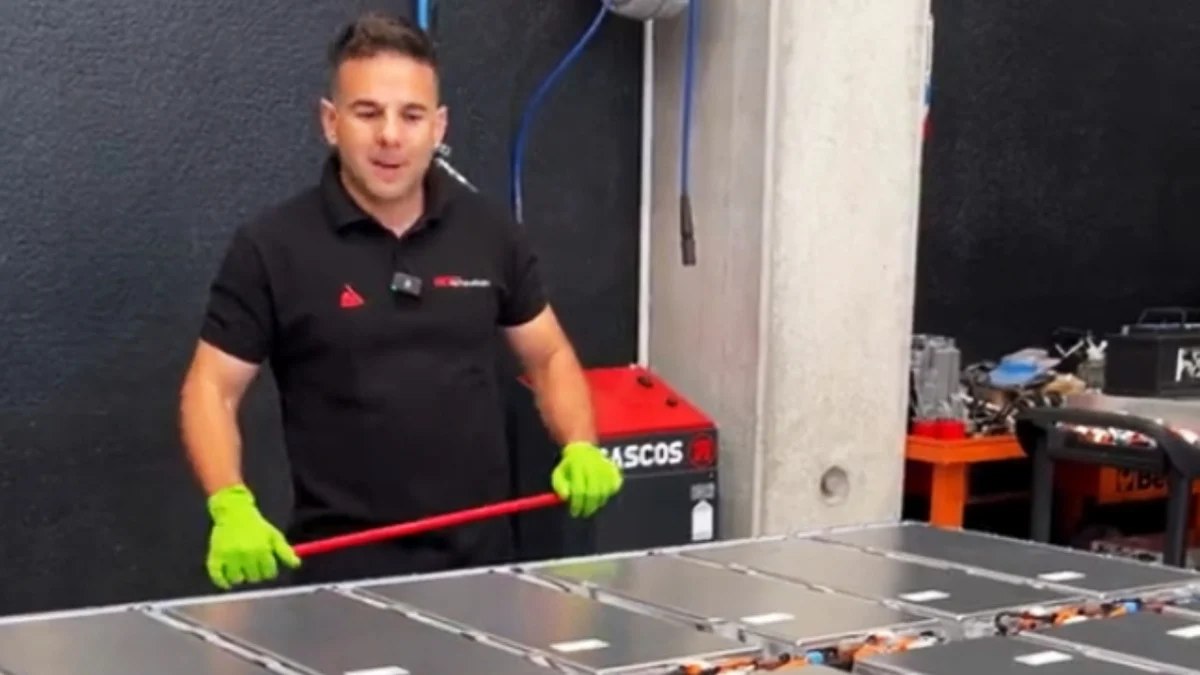A Mechanic’s Alarm Goes Global
The electric-vehicle world thrives on bold promises. But a Spanish mechanic, Ángel Gaitán, has thrown a wrench into that optimism with a claim that jolted the industry.
Through his widely viewed teardown videos, Gaitán alleges he uncovered an international scheme selling ordinary components as breakthrough tech.
Inside the “Graphene Supercaps” Hype
The products in question were marketed as graphene-based supercapacitors from Dubai, touted to deliver almost 500,000 charge cycles. That figure alone would eclipse most current lithium-ion benchmarks.
After a careful inspection, Gaitán reports he found Chinese lithium batteries disguised under vinyl wrap, with no trace of exotic materials or game-changing architecture.
What Was Actually Found
Gaitán documented what he describes as standard cells dressed in premium language. The packaging, branding, and marketing claims promised cutting-edge capacity and longevity.
Yet, he says, the internals told a different story: familiar lithium chemistry, conventional wiring, and no evidence of true supercapacitor behavior.
“People were paying for a future that wasn’t inside the box,” he argues in his analysis.
A Quote That Captures the Mood
“I didn’t find magic graphene circuits or 500,000-cycle miracles. I found everyday lithium cells with a costume.” — Ángel Gaitán
Why It Matters Beyond One Product
If verified by independent labs, the allegations expose a painful vulnerability: weak supply-chain diligence and inconsistent component verification.
EVs depend on battery credibility. A scandal here spreads doubt across the entire sustainability narrative, just as governments push ambitious electrification targets.
A Familiar Name in Consumer Battles
Gaitán is no stranger to high-stakes disputes. He previously won a lawsuit against Tesla involving concealed defects, a case that encouraged other consumers to come forward.
That legal victory, combined with his latest teardown, strengthens his image as a meticulous critic of EV quality and after-sales accountability.
The Political Cost of Broken Trust
Public trust is the fuel of the energy transition. When buyers fear they’re being sold illusions, adoption slows and policy wins turn fragile.
Programs that subsidize green technology rely on verifiable performance. If buyers suspect mislabeling or inflated specs, the social license for EV incentives erodes.
The Technical Reality Check
None of this negates the progress of modern lithium-ion systems, which continue to improve in density, durability, and cost. But it does call out overreach.
True supercapacitors offer stunning power delivery and fast charge/discharge, yet they still lag in energy density. Hybrid claims must clear strict, independent testing—no exceptions.
How Buyers and Regulators Can Respond
- Demand third-party lab reports with cell-level data and cycle-life curves.
- Verify chemistry, format, and manufacturer on the cell label itself.
- Look for traceability: lot numbers, QR codes, and certificates that can be cross-checked.
- Treat “miracle” specs (e.g., 500,000 cycles) as extraordinary claims requiring extraordinary proof.
- Prefer vendors who publish teardown documentation, not just slick marketing sheets.
- Pressure retailers to adopt refund and audit policies for misrepresented components.
The Industry’s Next Moves
Manufacturers and integrators need tighter inbound quality control, robust materials authentication, and randomized audits of high-risk suppliers. That includes chemical analysis and stress-testing under standardized protocols.
Retail platforms should deploy pre-listing verification for advanced claims and swiftly delist products that fail post-market surveillance.
What This Means for EV Adoption
EVs remain a core solution to urban air quality and long-term decarbonization. But progress depends on transparency, not storytelling.
The pathway forward is clear: rigorous standards, real disclosure, and consequences for deception. When bad actors face swift accountability, the entire ecosystem becomes stronger.
A Closing Perspective
Scandals spark cynicism, yet they also catalyze reform. If Gaitán’s findings hold up, the lesson is not to reject innovation, but to insist on evidence.
The future of mobility isn’t built on slogans. It’s built on chemistry, engineering, and proof—measured, reproducible, and honest.
